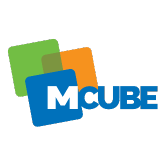Digital signage 4.0: sensors, apps and algorithms for retail
Market Trends
Digital signage is in constant evolution. In 2019, there are four trend topics to keep in mind in order to make the best use of this type of solution.
Sensors, apps and algorithms will be the key protagonists of new development based on the concept of dual service: supporting both the consumer and the brand.
1) Sensors and deep analytics for an all-round customer view
One of the problems associated with managing digital content is how to precisely measure whether a person perceives an advertising medium. Until now, the only area that offered precise parameters were the pay-per-click campaigns associated with online advertising. When it comes to outdoor advertising, the CPM (Cost per Thousand) used by media planners is not a true parameter but only a rough estimate. The integrated use of proximity sensors and cameras associated with facial recognition can detect and measure how many people are within the range of a digital signage solution, as well as interpreting their reactions. The algorithms used can not only profile age, gender, ethnicity and duration of gaze, they can interpret expressions and detect mood, guaranteeing a superior customer view. Other sensors, integrated into capacitive touchscreen surfaces, can measure clicks and interactions, which helps marketing professionals to evaluate the exact performance of advertising campaigns. Measuring how many people react to which content facilitates the creation of more targeted and efficient campaigns.
2) Digital signage in self-check stations
Smartphones, tablets and technologies associated with the world of video games (Kinect first of all) have helped people become accustomed to new ways of interaction linked to gestures that are now codified and shared. Digital signage today is much more than a choreographic screen, instead it takes on the role of a personal assistant and will respond on request. And that is how interactive totems and smart workstations inaugurated the era of self-check services. It is no coincidence that among the trend topics of 2019, experts have turned the spotlight onto the virtual shelf associated with cross-selling and upselling initiatives. The advantage for brands is that they can share the entire product catalogue (including products that are not currently in stock) and guarantee a better user experience. Especially if the catalogue is offered alongside a click & collect service, which solves the long-standing problem of “out-of-stock”.
3) More than hardware: don’t forget software
Beyond the necessary quality and high performance of the hardware, the intelligence of digital signage stems from its application component. The problem nowadays is that the touchscreen software available in the B2B sector is nowhere near comparable to that of the B2C world of smartphones and tablets. In fact, until now, the software linked to digital signage solutions has been developed ad hoc by dedicated teams. Naturally this has a significant impact on the cost of this type of project. However, 2019 will see the introduction of the first standardised management platforms, which will allow the capitalisation of research and development and make the best programming available to everybody.
4) Image recognition: in the words of the product
Products that connect and communicate thanks to a smartification that gains a voice through increasingly innovative digital signage solutions. Of all the 2019 tech topics, product recognition will be a very popular theme among brands. So, how does it work? Whether it’s a magic mirror, an interactive wall or an intelligent kiosk, the consumer can pick up a product and bring it closer to a reader built into the workstation. The system will read the code (RFID tag, NFC, QR Code or barcode) and show all associated information on the display as videos, images and text. This makes it possible to access a series of value-added information in absolute autonomy. And that’s not all: the same content can be shared on social media, downloaded to your smartphone or, in the case of recipes or coupons, printed with a click, thanks to an integrated printer.
Laura Zanotti, Journalist and Technical Writer

